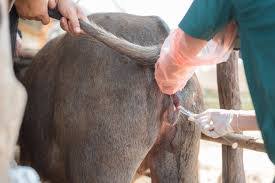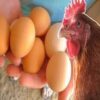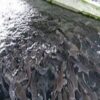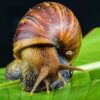Improving the efficiency of animal production remains a major objective in animal breeding. Artificial insemination is one of the proven practices available for improving farm animals.
It is used across all species of domestic animals, though it has been widely adopted by the dairy and beef industries globally. The process of artificial insemination involves semen collection, dilution, and insemination of the farm animal.
Read Also: Sheep gene insights could help farmers breed healthier animals
Definition of Artificial Insemination in Livestock Reproduction
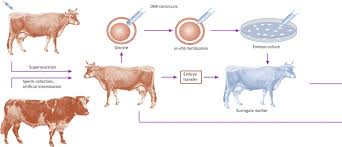
Artificial insemination is the technique in which semen containing live sperm is collected from a male and introduced into the reproductive tract of a female of the same species at the appropriate time using instruments to achieve pregnancy.
Advantages of Artificial Insemination in Farm Animal Breeding
- Uses diluted semen which provides more doses, enabling more females to be impregnated simultaneously.
- Increases the potential for genetic improvement.
- Reduces the risk of disease transmission.
- Enhances the safety of both animals and handlers.
Disadvantages of Artificial Insemination in Animal Production
- Requires labour-intensive detection of females on heat compared to natural mating.
- Benefits of increased offspring per male depend on accurate identification of superior males.
- May reduce genetic variability due to repeated use of the same male’s semen.
Recognizing Heat Symptoms in Farm Animals
- Animals display restlessness and nervousness.
- Reduced feed intake is observed.
- Frequent attempts to lick and smell other animals.
- Standing still when mounted by a male indicates standing heat.
- Attempts to mount other animals are common.
- Frequent urination occurs.
- Clear mucous discharge from a swollen vulva may be noticed.
- The tail is typically held in a raised position.
Artificial Insemination Techniques in Cattle
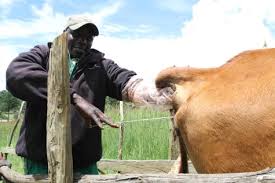
In cattle, semen is primarily collected from bulls using an artificial vagina. Bulls are trained to ejaculate into this device while it is held beside a teaser cow by an operator.
The entrance of the artificial vagina is lubricated with a non-spermicidal substance, and the inner lining is wrapped in thin rubber tubing, through which warm water (40–45°C) is introduced to stimulate ejaculation.
Once semen is collected, it is diluted or extended promptly. The most common extenders include skim milk or homogenized milk with 10% glycerol added after cooling to 5°C. The diluted semen is then packaged in 0.5–1 ml glass ampoules.
For insemination, the recto-vaginal method is commonly used. After cleaning the external genitalia, one gloved hand is inserted into the rectum to grasp the cervix.
The insemination pipette is then passed through the vulva and vagina into the external os of the cervix. Slight pressure and careful manipulation guide the pipette into the uterus, where the semen is slowly deposited. The best time for insemination is during the latter half of standing oestrus, and not later than six hours after oestrus ends.
Read Also: 17 Medicinal Health Benefits Of Mucuna pruriens (Monkey Tamarind)
Artificial Insemination Procedures in Swine Production
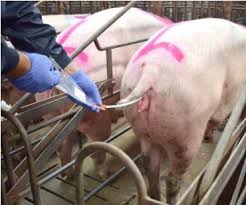
In swine, semen is collected from a boar while it mounts a sow in heat or a trained dummy sow. The tip of the penis is held with gloved hands to stimulate ejaculation. The semen is directed into a 500 ml thermos bottle maintained at 35°C.
Semen collection should not occur more frequently than once every three days. Proper handling is crucial to avoid contamination and temperature fluctuations. Boar semen can be stored for up to 30 hours at 7°C in an egg yolk-glucose-sodium bicarbonate solution or in heat-treated milk.
Since sows typically ovulate about 40 hours after the onset of standing heat, and the beginning of heat often goes unnoticed for 12–24 hours, insemination should occur at 12 and 24 hours after standing heat is observed. During insemination, a pipette is inserted into the cervix and semen is gently introduced using an attached syringe.
Artificial Insemination Methods in Poultry Production
In poultry, semen is collected by stimulating the cock’s copulatory organ. This is achieved by massaging the underside of the abdomen and back over the testes. The tail is pushed forward while the semen is milked from the ducts using the thumb and forefinger. An aspirator is used for collection.
To inseminate a hen, gentle pressure is applied around the vent to evert the cloaca and expose the oviduct. A syringe is then inserted approximately one inch into the oviduct to deliver the semen. To maintain high fertility levels, hens should be inseminated every 5–7 days.
Do you have any questions, suggestions, or contributions? If so, please feel free to use the comment box below to share your thoughts. We also encourage you to kindly share this information with others who might benefit from it. Since we can’t reach everyone at once, we truly appreciate your help in spreading the word. Thank you so much for your support and for sharing!

